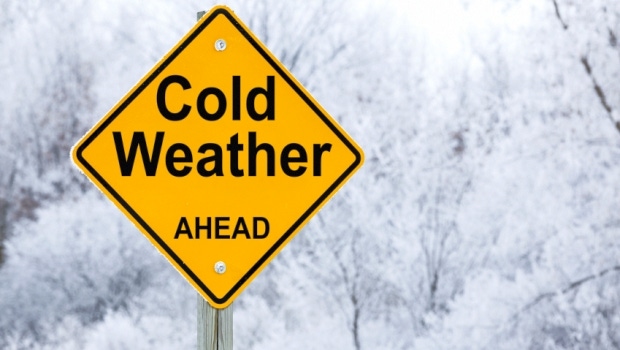It’s that time of year for self-storage operators to prepare for the onslaught of unforgiving winter weather. Follow these 12 tips to keep your facility safe and accessible this season.
December 25, 2015

By Liz Wolf
Reprinted with permission from "The Storage Facilitator" blog.
It’s that time of year for self-storage operators to catch up on maintenance needs and prepare for the onslaught of unforgiving winter weather. “It starts with the property manager conducting a full audit of their facility and putting together a list of what their maintenance needs are to protect themselves for the fall and winter,” says Michelle Wight-Sands, director of operations for Roseville, Calif.-based LifeStorage, which operates 89 properties in eight states.
Many facilities across the United States will once again face frigid temperatures and fierce snowstorms. Unfortunately, this can lead to collapsed roofs, frozen pipes and ice-covered keypads. However, business goes on, and tenants need to get to their units, even during the harshest weather.
“There’s nothing worse than when a customer comes to a property and can’t get into [his] drive-up unit because the door is completely iced and locked to the ground,” Wight-Sands says.
Winter preparation is essential in the self-storage business to ensure facilities are safe and accessible. Here are 12 tips to help guide you through this season.
1. Have a snow-removal plan. You can contract with an outside company or get the equipment to handle the job yourself. Experts say spending the extra money to hire a snow-removal service may just be the smartest move.
“I’ve seen owners say, ‘I’m going to do it myself,’” says Andrew Kelly, principal of Sierra Self Storage Consulting LLC, a self-storage consulting management company. “I’m like, ‘You gotta be kidding me. You’re going to get up at 3:30 or 4 a.m. in the morning?’ Well, that lasted one season. It just wasn’t worth it.”
LifeStorage managers obtain three bids from snow-removal companies and make sure each provider is fully insured. The chosen company then receives an aerial shot of the property with highlighted areas to show what needs to be plowed, shoveled or de-iced. This way the snow remover knows exactly what’s expected.
2. Stock up your maintenance room with winter necessities. Stock plenty of shovels and salt so managers can take care of icy walkways. Also make sure they have de-icer spray for customers dealing with frozen locks on their units, suggests Todd Allen, managing principal of Roswell, Ga.-based Reliant Real Estate Management LLC and vice president of operations for StoreSmart Self Storage, which operates more than 28 facilities in eight states.
3. Make sure doors and windows are insulated properly to prevent drafts. “Look for gapping around exit doorways or overhead garage doors, and repair any broken sealants because that can create cold pockets throughout your facility,” Wight-Sands says. Also do some general caulking of any gaps or holes to keep out the cold air.
4. Check thermostats. Make sure thermostats are in working order and reset them to the desired temperature, especially if you operate a climate-controlled facility, Wight-Sands advises. Make sure your manager is checking the thermostats daily.
5. Insulate water pipes to prevent freezing. A frozen water line can burst and result in flooding.
6. Check exterior lighting. The lighting around your property should be in good working order to keep customers and managers safe. Update timers on exterior marquees or outside lighting to reflect daylight-savings time, Wight-Sands says.
7. Have an up-to-date vendor list handy. “Have a good gate vendor and a lighting vendor,” Allen says. “A lot of times, if you have ice storms, lighting will have an issue; security will have an issue. One of the biggest things that happens in ice storms is your keypads go out because freezing rain gets into the boxes. Sometimes it will blow out the keypads and you have to replace those.” For your gate system, Allen says that if your motor box isn’t covered or insulated properly, water can get in and freeze, leading to problems with either a gate staying stuck open or not opening at all. Ensure that all vendors are fully insured.
8. Trim weak or dead tree branches around your facility. This will help prevent them from breaking and falling during an ice or snowstorm and damaging your property.
9. Clean out your gutters. “We use large hoses to flush out gutters at every facility,” Kelly says, adding that managers should make sure downspouts are also clear. “If gutters are not cleaned, water gets in, and it backs up and freezes. Then it becomes an overflow and runs into the units and backs up under the roof, creating lift problems.”
10. Address roof issues. Check for roof leaks and conduct any necessary repairs. Also clear snow off your building roofs on a regular basis to prevent a sudden collapse.
11. Get out the paintbrush. During the fall, paint all metal surfaces, including guard poles as well as curbs and asphalt signs, Kelly advises. You can also repaint safety stripes in the parking lots and driveways.
12. Have an expert check the heating systems. Do preventive maintenance on your heating, ventilation and air-conditioning system so it functions safely and consistently throughout the winter. “We call in a heating/AC contractor to check the office and manager’s apartment to make sure the heaters are functioning properly,” Kelly says. “We also put new batteries in the apartment’s carbon-monoxide detector.”
Don’t get caught off guard by snow, ice and freezing weather. Follow these simple steps to prepare your property for the colder months and keep yourself and tenants safe.
Liz Wolf is a freelance writer in the Twin Cities area. She specializes in business and commercial real estate writing and has 30 years of reporting and writing experience, 14 of which were spent at the “Minnesota Real Estate Journal.” She's a frequent contributor to "The Storage Facilitator."
You May Also Like





